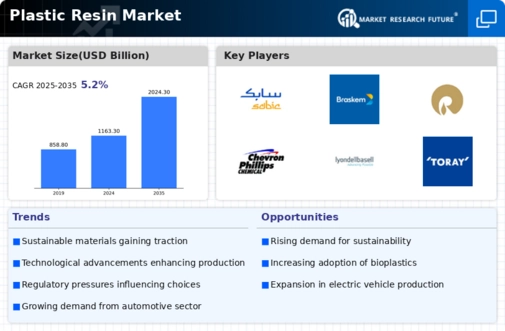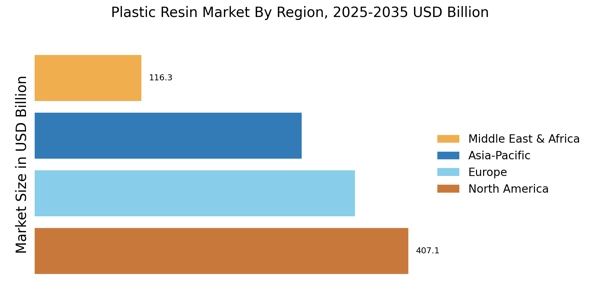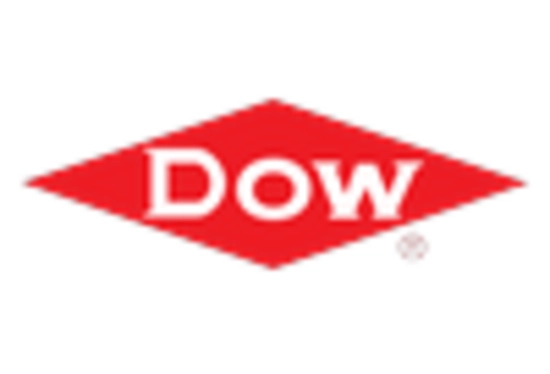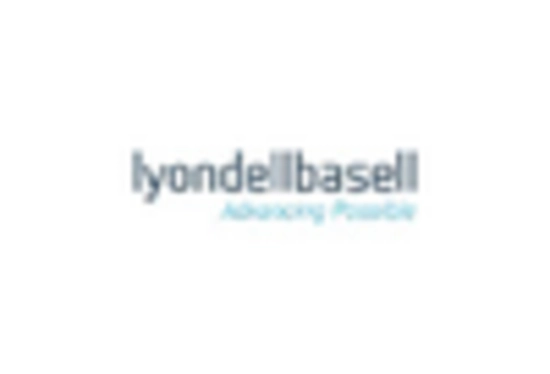Growth in Automotive Applications
The automotive industry is experiencing a notable shift towards the use of plastic resins, which is significantly impacting the Plastic Resin Market. As manufacturers strive to reduce vehicle weight and improve fuel efficiency, the adoption of lightweight plastic components is on the rise. In 2025, it is estimated that plastic resins will constitute approximately 15% of the total materials used in vehicle production. This transition is driven by the need for enhanced performance and sustainability in automotive design. Additionally, advancements in resin technology are enabling the production of high-performance materials that can withstand extreme conditions, further expanding their application in automotive parts. The Plastic Resin Market is thus poised for growth as it meets the evolving demands of the automotive sector.
Increasing Construction Activities
The resurgence of construction activities is a significant driver for the Plastic Resin Market. With urbanization and infrastructure development on the rise, the demand for plastic resins in construction applications is expected to grow substantially. In 2025, the construction sector is anticipated to account for nearly 25% of the total plastic resin consumption. Plastic resins are favored for their durability, versatility, and cost-effectiveness in various applications, including pipes, insulation, and flooring. Additionally, the trend towards sustainable building practices is encouraging the use of recycled plastic materials in construction, further bolstering the market. The Plastic Resin Market is thus positioned to benefit from these trends as it supplies essential materials for modern construction projects.
Rising Demand for Packaging Solutions
The increasing demand for packaging solutions is a primary driver of the Plastic Resin Market. As consumer preferences shift towards convenience and sustainability, manufacturers are focusing on developing innovative packaging materials. In 2025, the packaging segment is projected to account for over 40% of the total plastic resin consumption. This trend is largely influenced by the food and beverage sector, which seeks to enhance product shelf life while minimizing environmental impact. The Plastic Resin Market is adapting to these needs by producing biodegradable and recyclable materials, thereby aligning with consumer expectations for eco-friendly options. Furthermore, the rise of e-commerce has intensified the demand for durable and lightweight packaging, further propelling the growth of the plastic resin sector.
Technological Innovations in Resin Production
Technological innovations in resin production are reshaping the landscape of the Plastic Resin Market. The introduction of advanced manufacturing techniques, such as 3D printing and injection molding, is enhancing the efficiency and quality of resin products. In 2025, it is projected that these technologies will lead to a reduction in production costs by up to 20%, making plastic resins more accessible to various industries. Moreover, the development of smart materials that respond to environmental stimuli is opening new avenues for application in sectors such as healthcare and electronics. As these innovations continue to evolve, the Plastic Resin Market is likely to witness a surge in demand for high-performance and specialized resin products.
Expansion of Electronics and Electrical Applications
The expansion of electronics and electrical applications is driving growth in the Plastic Resin Market. As technology advances, the demand for lightweight, durable, and heat-resistant materials in electronic devices is increasing. In 2025, it is estimated that the electronics sector will represent approximately 20% of the total plastic resin market. This growth is fueled by the proliferation of consumer electronics, including smartphones, laptops, and smart home devices, which require high-performance plastic components. Furthermore, the trend towards miniaturization in electronics is pushing manufacturers to seek innovative resin solutions that can meet stringent performance criteria. The Plastic Resin Market is thus likely to see a continued rise in demand as it caters to the evolving needs of the electronics sector.


















Leave a Comment